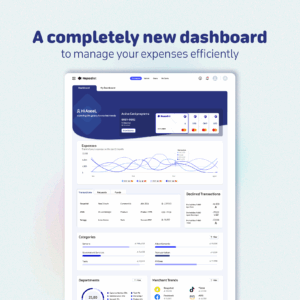In today’s digital landscape, cloud computing has become an integral part of business operations, offering scalability, flexibility, and cost-efficiency. However, effectively managing cloud spending and optimizing costs can be challenging, especially for companies with dynamic and complex cloud environments. This is where FinOps comes into play.
According to McKinsey, in 2020, the pace of cloud migration accelerated by a factor of 24. This indicates a large area of spending that requires careful management. In this blog, we introduce you to FinOps by exploring the key practices that can be implemented using the FinOps framework. For more in-depth information and practical guides, we recommend visiting the FinOps Foundation website.

What is FinOps?
FinOps, short for Financial Operations, is a framework and set of practices designed to manage and optimize cloud costs within organizations. It involves the collaboration between finance, operations, and technology teams to gain better control over cloud spending while ensuring that resources are utilized efficiently to meet business objectives.
So, how do you know if your company needs FinOps? Here are some signs:
- Lack of Cost Visibility: If your organization struggles to track and understand cloud spending across different teams and projects, it may indicate a need for FinOps. FinOps provides tools and practices to gain visibility into cloud costs and allocate expenses accurately.
- Unpredictable Spending Patterns: If your cloud spending fluctuates unpredictably or exceeds budgetary constraints, it may be a sign that your organization needs better cost management practices. FinOps helps identify cost optimization opportunities and implement strategies to control spending.
- Limited Accountability: If there is a lack of accountability for cloud spending within your organization, leading to overspending or inefficient resource allocation, FinOps can help establish accountability and responsibility for cloud costs among teams and departments.
Where should you begin with implementing FinOps practices?
Incorporating FinOps practices into your organization’s cloud management strategy can significantly enhance cost optimization and resource efficiency. However, embarking on this journey requires careful planning and strategic implementation. Here are three essential tips to help your company kickstart its FinOps journey effectively:
- Evaluate Current Cloud Spending: Start by analyzing your current cloud expenses to identify areas for optimization and set realistic goals.
- Utilize Cost Visibility Tools: Invest in tools that provide real-time insights into cloud spending, allowing for better tracking and allocation of resources.
- Promote Cross-Functional Collaboration: Encourage collaboration between finance, operations, and technology teams to align cloud spending with business objectives and drive efficient resource management.
The takeaway
FinOps is essential for organizations looking to maximize the value of their cloud investments. However, don’t prioritize saving money over getting the most out of what you spend. In FinOps, it’s about balancing cost savings with what you gain. For example, you might choose to use a free trial to save money or pay for a plan sooner to access more features. It depends on what’s best for your situation. Finally, to start building the right infrastructure for FinOps in your enterprise, seek out the right resources and find professionals who have gathered some experience in the field.





